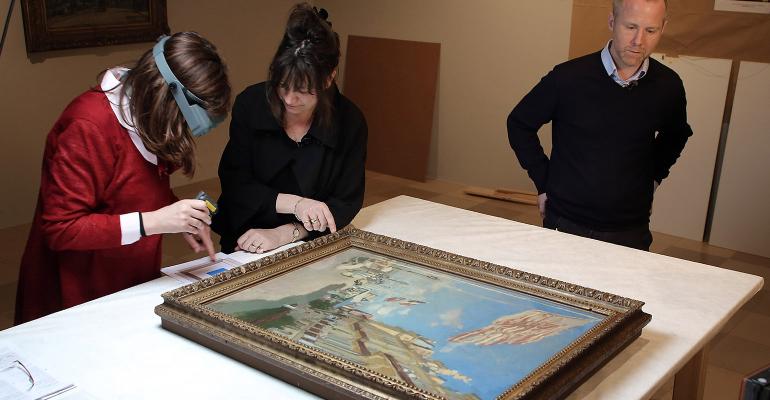The current swelling of demand for investment art has caused a sharp increase in legal proceedings over questions of authenticity and provenance.
The rise of social media has had a disruptive effect on art marketing. The internet has emerged as a marketplace in which artists can display their work, dealers can market them and buyers can discover them. This has increased the exposure of taxable estates and heirs to sophisticated counterfeiters.
This problem has harshly exposed the difficulties inherent in conducting suitable due diligence in such an opaque and unregulated market. Luckily, there are new evolving technologies of which professionals should be aware, as well as the new standards of practice used to employ them.
Determining Authenticity
Determining the authenticity of a given work traditionally starts with scientific testing of the materials used. With Fine Art paintings, the investigator will look at the paint pigments, type of canvas, stretchers, canvas fastening devices and frames. If any part of the materials fails to be from the proper time period, the work immediately fails the authenticity test. For example, in Balog v. Center Art Gallery-Hawaii, Inc., 745 F. Supp. 1556 (D. Haw. 1990), the Dali prints under dispute were obviously forged as the underlying paper was manufactured after Dali stopped signing prints.
While forensic testing can prove that a work of art isn’t authentic, the reverse isn’t always true. Materials can be consistent with the supposed time period, but old canvases can be scraped for their era-period paint, which can be reconstructed. Canvases were commonly painted over by the masters. The work must also pass forensic tests of signature, text, documentation of provenance and fingerprints in addition to the specific examination of the supposed artist’s style, brush stroke, normal content and cultural markers.
New Procedures and Tools
As this line of attack becomes more sophisticated, there are new procedures and tools available that undertake to change the very nature of due diligence in art transactions. Among the most promising are:
- Anti-forgery algorithms. These algorithms use big data and artificial intelligence methods to apply deep learning to the canvas and paint, the compositional techniques and stylistic signatures of the artist in question. The algorithms analyze and codify those characteristics that uniquely identify an artist to distinguish them from those of forgers.
- Tagging. Artists can electronically tag their work both to guarantee the authenticity as well as deter counterfeiting.
- Peptide mass fingerprinting (PMF). This uses the mass spectrograph to analyze proteins that have been used for centuries in paints, adhesives and coatings. PMF identifies unique markers that make up the “fingerprint” of a sample, allowing works to be matched precisely to similar works by the same artist with any mismatch strongly indicating a possible forgery.
- Synthetic DNA. This puts an inconspicuous tag on new works
- Blockchain. A transaction-recording technology, commonly associated with digital currencies, is now being used to track the movement and verify the provenance of digital art.
Upgrade Practices
It’s now necessary for all artists, investors, collectors, the lawyers who represent them and the appraisers, who aren’t authenticators, on whom they rely, to upgrade and amend their practices.
While authenticating older works will continue to rely mainly on the labor intensive and subjective processes of the past, viewing new works will be noticeably more scientifically based.





